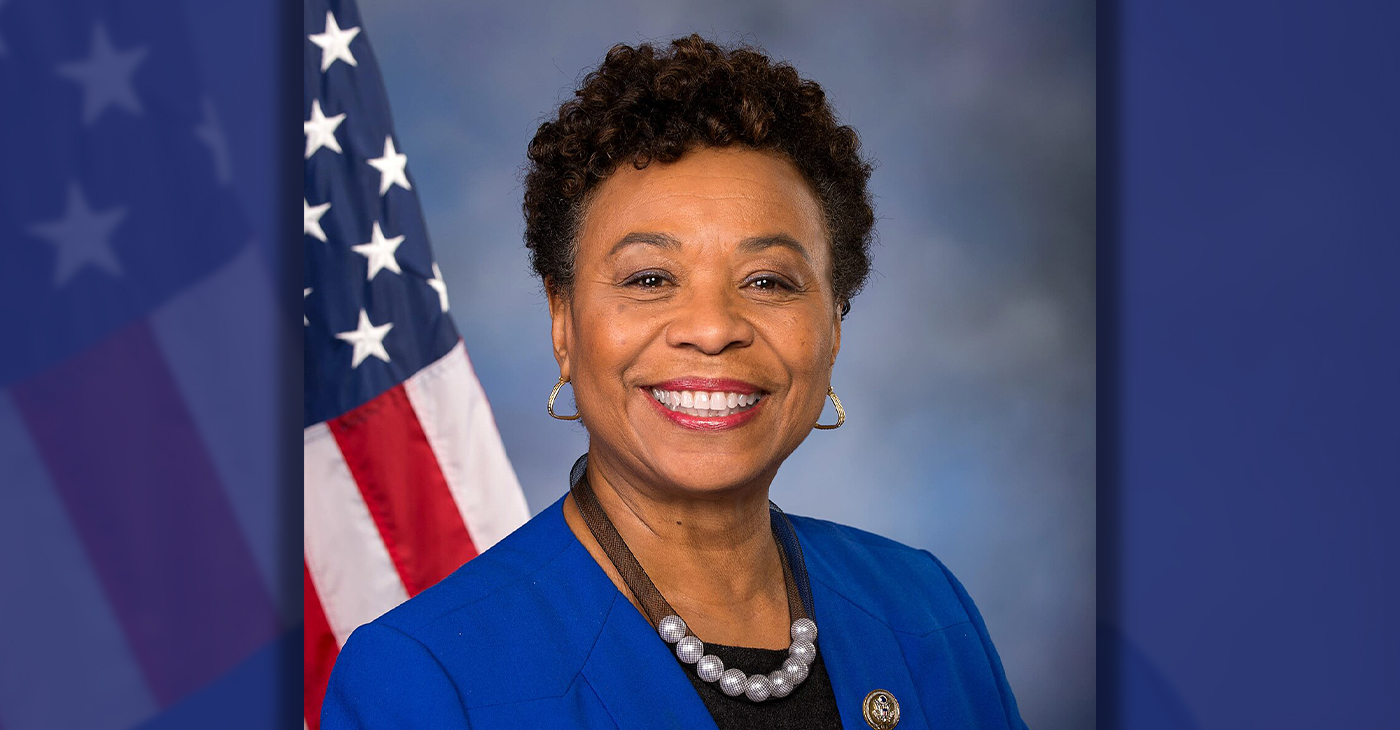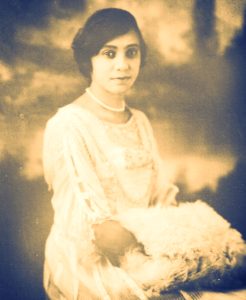National
Legacy of ‘First Lady of the Black Press’ Still Relevant Today
By Jazelle Hunt
NNPA Washington Correspondent
WASHINGTON (NNPA) – When James McGrath Morris set out to write his latest book, he didn’t know how timely it would be. When Eye on the Struggle: Ethel Payne, The First Lady of the Black Press hit shelves, Essence magazine had just released its Black Lives Matter issue. The Justice Department had closed its investigation into Trayvon Martin’s murder, with no charges. Mainstream media was scrambling to report on police violence and systemic racial ills, and Black Americans took much of this coverage to task for its racist, shallow, or negligent portrayals.
“We get these events filtered through the mainstream media. The mainstream media is still very White. I don’t mean they don’t hire people of color…it’s a perspective issue. The fact the media had a debate over the use of the word ‘terrorist’ [for Dylann Roof] in South Carolina is an indication,” said Morris.
“So what I found is that Ethel Payne’s story, her perspective, her form of journalism 50 years ago, still has relevance today. Because while we may have made leaps in terms of segregation…the dominant filter today remains a White-controlled media.”
Ethel Payne was poking holes in that filter at a time when the White majority fought against the tide of sustained agitation to secure civil and human rights for all. At the Chicago Defender, Payne was the eyes and ears of the Civil Rights Movement, reporting from its front lines in the Deep South, press conferences at the White House, and iconic rulings at the Supreme Court. In 1953, she became the third Black person to join the White House Press Corps, and was known for persistently prodding President Dwight D. Eisenhower on Jim Crow laws and desegregation efforts.
In the ’50s and ’60s, she jetted around the globe for international stories such as Black soldiers in Vietnam and the Nigerian Civil War, becoming the first Black woman to be a fulltime foreign correspondent. Yet, she always returned for on-the-ground coverage of moments that would become history, like the start of the Montgomery bus boycott and the desegregation of Little Rock, Ark.’s Central High School.
In 1972, Payne joined CBS and became the first Black woman commentator at a major network. In 2002, she was memorialized on a postage stamp.
With 40 years of tireless journalism and a legacy honed at a Black-owned newspaper, Payne earned her reputation as the “First Lady of the Black Press.”
“When The New York Times or The Washington Post would report on the passage of the Civil Rights Act of ‘64 or the Voting Rights Act of ‘65, the tone of the articles was that these were munificent gifts being given to a disenfranchised people,” Morris said.
“Whereas, if you opened up the Afro American or the Pittsburgh Courier or Chicago Defender, what you were seeing was coverage of the fact that these were victories, hard-won victories by people who laid their lives on the line. Nothing was being given. In fact, [Payne’s] coverage often highlighted the inadequacies of these pieces of legislation.”
In the early ‘70s, Ernest Green, a member of the Little Rock Nine, made a quip to Payne about what desegregation would do to such coverage.
“He said to her that the successes she and others made with the Civil Rights Movement were going to put the Black Press out of business. Obviously, that was too strong of a determination, because there’s still a viable Black press, but his bigger point was right in that the White media was going to raid the Black press for the best reporters, offer them jobs at much higher pay. And if you’re raising a family, what are you going to do?” Morris recounted.
“Many of the best reporters were lured away. But also, importantly, the economic basis of the Black press was undercut. Because when the White press refused to cover Black communities – high school tournaments, weddings, graduations, obituaries – there was an economic reason for [Black papers].”
Further, another side effect of integration and the Civil Rights Movement is that subsequent generations do not get a thorough and true education on Black history, or how the Movement happened. Payne said as much at a speaking engagement at her childhood church, [Greater] St. John A.ME. Church.
“She told her audience that, ours was a generation who laid their lives on the line to send our kids to college, but in doing so forgot to tell them our story. I like to expand that…we tend to teach the Civil Rights Movement focused on its leadership,” he said.
“Ethel Payne was part of the lesser-known group, she’s in the second, third tier of the Civil Rights Movement. I see younger people…waiting for somebody else to come and lead them. But these movements come from everyday people.”
Morris, a former journalist who also taught high school history for a decade, has been writing biographies and narrative nonfiction for many years. In searching for a new subject, he stumbled upon Payne’s name, which was unknown to him at the time. With a little more research, he was startled to find that few historians had taken a deep look at her contributions to journalism and the Civil Rights Movement.
“For me, [this book] has been the greatest experience of my life. It’s been really an honor, for me as an author, to do a book that matters,” Morris said. “I’ve had the privilege of learning that race really matters, but I didn’t know it because I was able to stay removed from it. That, to my mind, is Ethel Payne’s gift to me.”
Payne’s personal papers and journals are housed in Washington, D.C. with the Library of Congress’ Manuscript Division and the Moorland-Spingarn Research Center at Howard University, and in New York at the Schomburg Center for Research in Black Culture.
Eye on the Struggle: Ethel Payne, The First Lady of the Black Press is available at major book retailers. Signed copies can be purchased via www.jamesmcgrathmorris.com/eyeonstruggle.html.
“She went as a reporter to the front lines of the Civil Rights Movement…to report back to African Americans…to activate them,” Morris said. “The more people learn about Ethel Payne, I think they too will feel a sense of power.”
Activism
Oakland Post: Week of April 17 – 23, 2024
The printed Weekly Edition of the Oakland Post: Week of April 17 – 23, 2024

To enlarge your view of this issue, use the slider, magnifying glass icon or full page icon in the lower right corner of the browser window. ![]()
Barbara Lee
Congresswoman Barbara Lee Issues Statement on Deaths of Humanitarian Aid Volunteers in Gaza
On April 2, a day after an Israeli airstrike erroneously killed seven employees of World Central Kitchen (WCK), a humanitarian organization delivering aid in the Gaza Strip, a statement was release by Rep. Barbara Lee (D-CA-12). “This is a devastating and avoidable tragedy. My prayers go to the families and loved ones of the selfless members of the World Central Kitchen team whose lives were lost,” said Lee.

By California Black Media
On April 2, a day after an Israeli airstrike erroneously killed seven employees of World Central Kitchen (WCK), a humanitarian organization delivering aid in the Gaza Strip, a statement was release by Rep. Barbara Lee (D-CA-12).
“This is a devastating and avoidable tragedy. My prayers go to the families and loved ones of the selfless members of the World Central Kitchen team whose lives were lost,” said Lee.
The same day, it was confirmed by the organization that the humanitarian aid volunteers were killed in a strike carried out by Israel Defense Forces (IDF). Prior to the incident, members of the team had been travelling in two armored vehicles marked with the WCF logo and they had been coordinating their movements with the IDF. The group had successfully delivered 10 tons of humanitarian food in a deconflicted zone when its convoy was struck.
“This is not only an attack against WCK. This is an attack on humanitarian organizations showing up in the direst situations where food is being used as a weapon of war. This is unforgivable,” said Erin Gore, chief executive officer of World Central Kitchen.
The seven victims included a U.S. citizen as well as others from Australia, Poland, the United Kingdom, Canada, and Palestine.
Lee has been a vocal advocate for a ceasefire in Gaza and has supported actions by President Joe Biden to airdrop humanitarian aid in the area.
“Far too many civilians have lost their lives as a result of Benjamin Netanyahu’s reprehensible military offensive. The U.S. must join with our allies and demand an immediate, permanent ceasefire – it’s long overdue,” Lee said.
Commentary
Commentary: Republican Votes Are Threatening American Democracy
In many ways, it was great that the Iowa Caucuses were on the same day as Martin Luther King Jr. Day. We needed to know the blunt truth. The takeaway message after the Iowa Caucuses where Donald Trump finished more than 30 points in front of Florida Gov. De Santis and former South Carolina Governor Nikki Haley boils down to this: Our democracy is threatened, for real.

By Emil Guillermo
In many ways, it was great that the Iowa Caucuses were on the same day as Martin Luther King Jr. Day.
We needed to know the blunt truth.
The takeaway message after the Iowa Caucuses where Donald Trump finished more than 30 points in front of Florida Gov. De Santis and former South Carolina Governor Nikki Haley boils down to this: Our democracy is threatened, for real.
And to save it will require all hands on deck.
It was strange for Iowans to caucus on MLK day. It had a self-cancelling effect. The day that honored America’s civil rights and anti-discrimination hero was negated by evening.
That’s when one of the least diverse states in the nation let the world know that white Americans absolutely love Donald Trump. No ifs, ands or buts.
No man is above the law? To the majority of his supporters, it seems Trump is.
It’s an anti-democracy loyalty that has spread like a political virus.
No matter what he does, Trump’s their guy. Trump received 51% of caucus-goers votes to beat Florida Gov. Ron DeSantis, who garnered 21.2%, and former South Carolina Gov. Nikki Haley, who got 19.1%.
The Asian flash in the pan Vivek Ramaswamy finished way behind and dropped out. Perhaps to get in the VP line. Don’t count on it.
According to CNN’s entrance polls, when caucus-goers were asked if they were a part of the “MAGA movement,” nearly half — 46% — said yes. More revealing: “Do you think Biden legitimately won in 2020?”
Only 29% said “yes.”
That means an overwhelming 66% said “no,” thus showing the deep roots in Iowa of the “Big Lie,” the belief in a falsehood that Trump was a victim of election theft.
Even more revealing and posing a direct threat to our democracy was the question of whether Trump was fit for the presidency, even if convicted of a crime.
Sixty-five percent said “yes.”
Who says that about anyone of color indicted on 91 criminal felony counts?
Would a BIPOC executive found liable for business fraud in civil court be given a pass?
How about a BIPOC person found liable for sexual assault?
Iowans have debased the phrase, “no man is above the law.” It’s a mindset that would vote in an American dictatorship.
Compare Iowa with voters in Asia last weekend. Taiwan rejected threats from authoritarian Beijing and elected pro-democracy Taiwanese vice president Lai Ching-te as its new president.
Meanwhile, in our country, which supposedly knows a thing or two about democracy, the Iowa caucuses show how Americans feel about authoritarianism.
Some Americans actually like it even more than the Constitution allows.
About the Author
Emil Guillermo is a journalist and commentator. He does a mini-talk show on YouTube.com/@emilamok1.
-

 Activism4 weeks ago
Activism4 weeks agoOakland Post: Week of March 20 – 26, 2024
-

 #NNPA BlackPress3 weeks ago
#NNPA BlackPress3 weeks agoCOMMENTARY: D.C. Crime Bill Fails to Address Root Causes of Violence and Incarceration
-

 #NNPA BlackPress3 weeks ago
#NNPA BlackPress3 weeks agoMayor, City Council President React to May 31 Closing of Birmingham-Southern College
-

 #NNPA BlackPress4 weeks ago
#NNPA BlackPress4 weeks agoFrom Raids to Revelations: The Dark Turn in Sean ‘Diddy’ Combs’ Saga
-

 #NNPA BlackPress4 weeks ago
#NNPA BlackPress4 weeks agoCOMMENTARY: Lady Day and The Lights!
-

 Activism3 weeks ago
Activism3 weeks agoOakland Post: Week of March 27 – April 2, 2024
-

 #NNPA BlackPress4 weeks ago
#NNPA BlackPress4 weeks agoBaltimore Key Bridge Catastrophe: A City’s Heartbreak and a Nation’s Alarm
-

 #NNPA BlackPress4 weeks ago
#NNPA BlackPress4 weeks agoBaltimore’s Key Bridge Struck by Ship, Collapses into Water










































